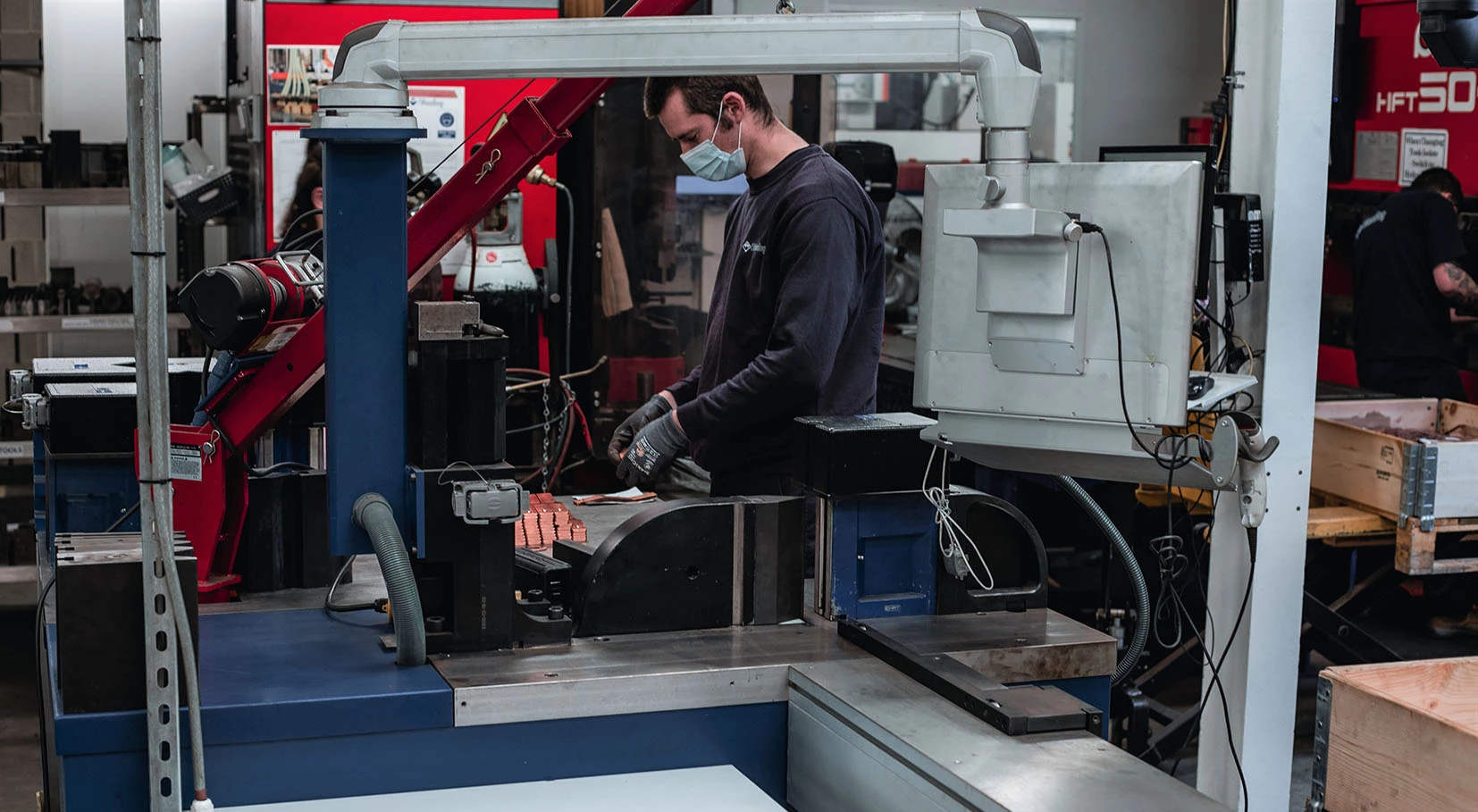
Partner Article
HV Wooding teams up with Nuclear AMRC to target £1m electrification boost
Development of a new powder coating process for parts destined for electric vehicles is set to deliver a £1m boost for a Kent-based manufacturer.
HV Wooding, which specialises in providing precision engineered metal components for the automotive and aerospace sectors, is working with materials and engineering researchers from the Nuclear Advanced Manufacturing Research Centre (Nuclear AMRC) and the University of Sheffield to improve the quality of the busbars it is producing.
Supported by Innovate UK through the Faraday Battery Challenge, the project focuses on investigating and developing alternative coating methods that will improve the performance and integrity of the critical components, which carry high-current power between different parts of an electrical system.
“Current coating methods are difficult to control, with a high level of components rejected because of poor quality insulation,” explained Paul Allen, Sales Director at HV Wooding.
“There is currently no standard specification or process availability, and our new method will contribute supply chain capability and capacity for battery and energy storage applications.”
He continued: “We will develop a best practice testing method to standardise quality assurance where there is currently no international standard, and this could generate up to £1m in additional sales to our business.”
HV Wooding previously worked with the Nuclear AMRC through the Fit For Nuclear programme, which helps manufacturers meet the quality expectations of the nuclear supply chain.
The company will look to maximise the centre’s advanced manufacturing methods, as well as tapping into University researchers to develop a standardised test procedure for quality assurance, demonstrating that each busbar meets all the required integrity standards with minimal risk of failure in use.
“The current busbar coating process is difficult to control and can’t currently be scaled up to meet customer demands in the UK,” commented Dr Li Li, head of the Nuclear AMRC’s control & instrumentation research group.
“This funding enables collaboration between a UK SME and academia to tackle a real pressing issue and this project will help ramp up production at HV Wooding whilst also minimising the product failure rate.
“Our team from the University of Sheffield will bring our expertise in electro-mechanical design, process, testing and manufacturing to ensure this collaboration will ultimately enhance the UK’s capability in producing quality busbars for automotive and adjacent supply chains.”
The one-year project will also draw on the specialist capabilities of the University of Sheffield AMRC – like the Nuclear AMRC, part of the UK’s High Value Manufacturing Catapult – and the Department of Electronic and Electrical Engineering.
Paul went on to add: “Powder coated insulated busbars are safer than heat shrink sleeved alternatives. They have better thermal and electrical performance alongside other benefits in compact battery design - for example saving up to 10% clearance and creepage distance.
“If the innovative and optimised epoxy powder coating process is implemented it will definitely open up new markets and will lead to new skilled jobs in our area.
“The successful project will support the overall goal of the Faraday Battery Challenge and scale-up British busbar manufacturing for battery modules and packs in accordance with the UK’s Ten Point Plan for a green industrial revolution.”
For further information, please visit www.hvwooding.co.uk or namrc.co.uk
This was posted in Bdaily's Members' News section by Russ Cockburn .
Enjoy the read? Get Bdaily delivered.
Sign up to receive our popular morning London email for free.








 Why investors are still backing the North East
Why investors are still backing the North East
 Time to stop risking Britain’s family businesses
Time to stop risking Britain’s family businesses
 A year of growth, collaboration and impact
A year of growth, collaboration and impact
 2000 reasons for North East business positivity
2000 reasons for North East business positivity
 How to make your growth strategy deliver in 2026
How to make your growth strategy deliver in 2026
 Powering a new wave of regional screen indies
Powering a new wave of regional screen indies
 A new year and a new outlook for property scene
A new year and a new outlook for property scene
 Zero per cent - but maximum brand exposure
Zero per cent - but maximum brand exposure
 We don’t talk about money stress enough
We don’t talk about money stress enough
 A year of resilience, growth and collaboration
A year of resilience, growth and collaboration
 Apprenticeships: Lower standards risk safety
Apprenticeships: Lower standards risk safety
 Keeping it reel: Creating video in an authenticity era
Keeping it reel: Creating video in an authenticity era